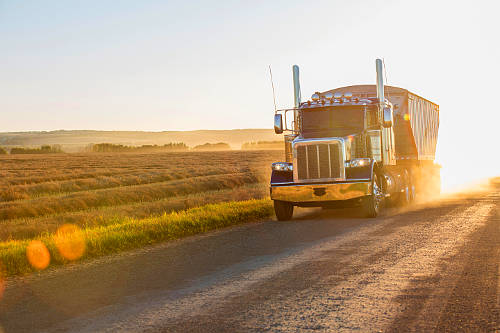Driving a non-synchromesh transmission is complicated. Learn how here!
TOPICS
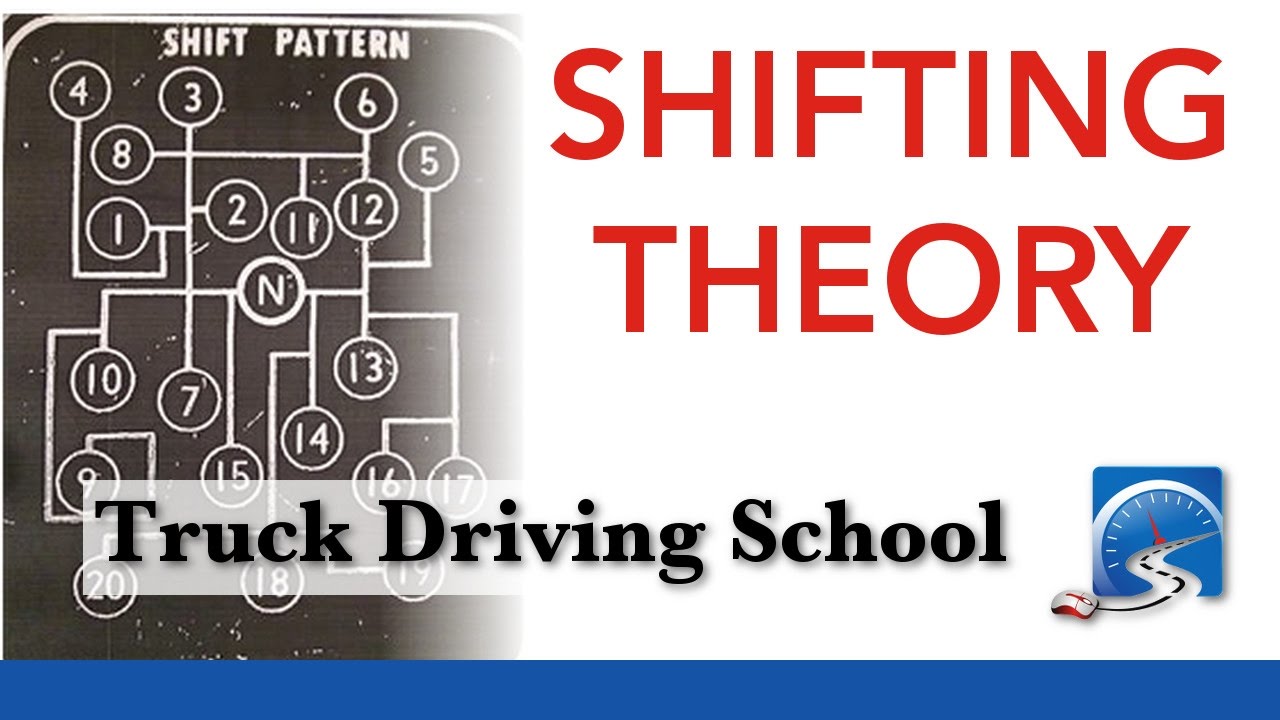
SUMMARY
OverviewRange SelectorAll transmissions are basic 5-speed patterns. What allows a 5-speed transmission to become a 10-speed transmission is the range selector. Down for low, up for high. The only time you use the range selector is between fourth and fifth. You're going from 4th to 5th, pull it up, andf shift to fifth. If you're going from fifth to fourth, push it down before you come out of fifth and it'll shift as you go through neutral. SplitterThe splitter gives you 13- or 18-speeds. So it's red, blue, or grey. Red is 13-speed, blue is 15, grey is 18-speed. ClutchThe clutch is very different than that you're going to find on a car or light truck. Top of it's the freeplay, the friction point, the dead space and then the clutch brake. Clutch brake has to be engaged only for starting gears - 1st & reverse. After that you only push the clutch in 1-inch because if you push it farther than one inch you start to engage the clutch brake. When you engage the clutch brake you to slow the gears down in the transmission and you're going to get a rough shift. Double-clutch to startOne of the other things that you have to do as well is you have to double-clutch: once into neutral another clutch into gear - ba dump, ba dump, ba dump, ba dump. To Shift a Non-Synchromesh Transmission you have to match the engine speed, the road speed, and the gear. Those three things have to line up. And as well, geography is going to start having an impact on your shifting because downhill-uphill is going to affect the road speed. Therefore you have to adjust the other two variables to compensate for that. And again the last piece: and this goes for any manual transmission, not just a non-synchromesh - don't ride the clutch. As soon as you finish shifting the gear, get your foot off that clutch. Don't ride the clutch on any vehicle! Downshifting
It's different than normal cars and light trucks. You got to slow the vehicle down - bring the RPM all the way down to a thousand to downshift. |
Updated March 2023
Introduction
Hi there smart drivers.
Rick with Smart Drive Test talking to you today about shifting theory for non-synchromesh transmissions.
In your car or light truck a manual transmission is a synchromesh transmission, which essentially speaking or simplistically speaking means that you could go down the road at 100 kilometers an hour, take it out of fifth gear stick it back into first and it'll go into first...
you don't want to let the clutch out, but it'll go back into first.
A non- synchromesh transmission on a big truck you can take that stick out of high gear and try to put it back into first gear...you'll break the stick off before it goes back into first gear.
It is the driver's job to synchronize the transmission.
In order to do that you gotta line up:
1) the gear;
2) the road speed;
3) the engine speed.
Those three things have to match or it's not going to go into gear.
So today, we're going to talk to you about shifting a non-synchromesh transmission and the theory behind it.
13- & 18- Speed Transmissions
Hi there smart drivers welcome back.
Rick with Smart Drive Test talking to you today about shifting theory for a non-synchromesh transmission.
This is for drivers going to driving school and learning how to drive a big truck.
And this particularly is directed towards 13- and 18-speed transmissions.
I will cover some of the other transmissions, but for the most part 13- & 18-speed transmissions.
Shifting Pattern
Now the first part of a non-synchromesh transmission is the shifting pattern: reverse, low sometimes, called bull - 1,2,3,4.
So reverse and low or bull are up here.
First, second, third and fourth - and what confuses students or causes challenges for students is that yes it is a basic 5-speed pattern, but you drive it like a four speed - 1,2,3,4.
The only time you're going to use low is if you're starting off with a really heavy load - a set of super B's at a hundred forty thousand pounds or sixty three thousand five hundred kilograms, or you're pulling out of a loading dock, or just need to go slow, hooking up to trailers and those types of things where you need a bit of control.
And you use low gear or you're starting off on a really steep grade and you're just trying to get the truck going.
But for the most part you're just going to use first gear.
 How students see a 13- or 18-speed transmission shift pattern on first encounter.
How students see a 13- or 18-speed transmission shift pattern on first encounter.
Now to get to reverse and low, there's a bit of a wall here.
If you pull the shifter over towards you, you'll feel a bit of a spring there and that way you'll know that not only are you in neutral, but you also know where to find low and reverse.
As with all five speed transmission - no matter whether it's a car, light truck, or a big truck - the shifter rests between the two middle gears.
So for the purposes of a big truck it rests between first and second.
If you're in your car or light truck it'll rest between third and fourth, which are the middle gears.
So if you just let go of it in neutral and push it straight forward, it'll go right up to first.
High Range-Low Range
Now you say to yourself, how do I get more gears out of a 5-speed transmission? So the way that you get more gears on a 5-speed transmission in a big truck is on the front of the shifter is the range selector - down is low and up is high.
The only time you use the range selector is between fourth and fifth.
So for fourth to fifth you push the range selector up - you pre-select the range selector - flip it up with your middle finger, push the stick into neutral, let go of the stick and push straight forward.
 When going downhill, you'll need to shift to a lower gear and use the auxiliary braking to assist with slowing the vehicle.
When going downhill, you'll need to shift to a lower gear and use the auxiliary braking to assist with slowing the vehicle.
It will go back into fifth on the high range.
So think of it like a downstairs and upstairs.
The range selector is the staircase that takes you up to the top five gears.
On the top, you've got another five gears 5,6,7,8.
So basically if you're driving it like a four-speed, as you will in a 13- and 18- speed, you now have eight gears.
1,2,3,4,5,6,7,8.
If you include low you now have a nine-speed and in the ten speed transmissions, what happens is that instead of going back to the fifth gear, which is up here, you go out of eight and over and down to low which will give you ten gears.
So those are the variations for eight nine and ten speed transmissions.
However in this day and age, most of the transmissions that you're going to drive are going to be 13- or 18-speeds because the technology has advanced and moved forward and they're much more robust so they've infiltrated the industry and really those are the most common transmissions that you're going to find on big trucks now.
So you now ask yourself we've got to eight, nine, or ten gears - ten gears for the purposes of simplicity.
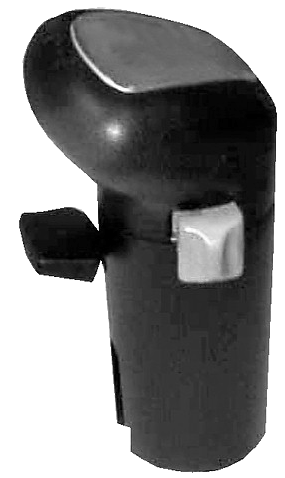 A 18-speed shifter showing both the range selector and grey splitter button.More Gears I Say...More Gears
A 18-speed shifter showing both the range selector and grey splitter button.More Gears I Say...More Gears
How do we get 13, 15 or 18 gears? And what happens is on the side...on the side of he shift lever is the splitter.
The splitter allows you to split the gears in the top range.
If it's red, it's a 13-speed; if it's blue, it's a 15-speed; and if it's grey, it's an 18-speed.
Now let's just talk about 13- and 18- for just a moment because 15-speeds are different than 13 and 18.
So what happens in a 13- speed is 1,2,3,4, flip the range selector up and go back to five - five, six, seven, eight, and then what happens in the top range is that you can split each one of the gears.
Splitter
So low-high, low-high, low- high, low-high.
So you shift from 4th to 5th: 5-lo, push the splitter forward, take your foot off the throttle - break the tension in the drive train--wait a moment, let the RPMs drop a couple hundred rpm, back on the throttle - it shifts to high.
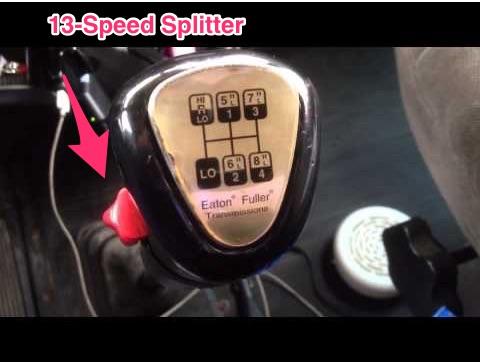 A RED splitter button on the side of the gear selector is a 13-speed transmission. You can split the top 4 gears in the transmission, giving you a total of 8 on the top range and 5 on the bottom range.
A RED splitter button on the side of the gear selector is a 13-speed transmission. You can split the top 4 gears in the transmission, giving you a total of 8 on the top range and 5 on the bottom range.
Pre-select back the low, shift to six like a normal shift, six-low six high - pre-select back to low - seven lo seven high, pre-select back to low 8-lo 8-hi.
So what happens is you get five on the bottom...low 1,2,3,4 - range selector up to high, back to 5-lo 5-hi, six-lo six-hi, 7-lo 7-hi, 8-lo 8-hi.
So you get five in the bottom, eight on the top.
5 + 8 gives you a 13-speed.
And that's how you get 13-speed.
Now how you get an 18-speed is that you can split all the gears on the bottom and all the gears on the top so you get 10 gears on the bottom and eight gears on the top, which gives you an 18-speed.
Now an 18-speed is a glorified 13-speed.
You're never going to split the gears on the bottom, unless you're running around a gravel pit, or you're one of those Ice Road Truckers.
You're just not going to do it, it's too much work!
So essentially, what you're going to do is a 13- and 18-speed transmission - both of these transmissions are going to be driven like a 12-speed.
1,2,3,4 - four gears in the bottom, eight gears on the top - so it's essentially a 12-speed.
And you've got to get your head around that.
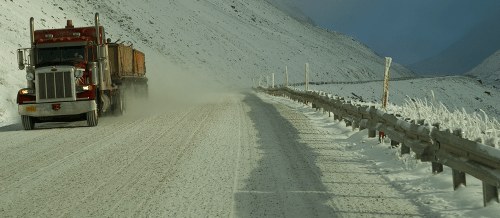 The proper gear for downhill braking is 5th low. This is a good staring gear for new drivers. After you get more experience, you can pick a different gear.
The proper gear for downhill braking is 5th low. This is a good staring gear for new drivers. After you get more experience, you can pick a different gear.
And that will be your challenge at the beginning of learning how to shift a non-synchromesh transmission.
15-Speed Transmission
Now I'll just touch on what a 15-speed is for a moment.
If you get in a truck and it's got a blue button in it, it's a 15-speed.
Now this is not a splitter in a 15-speed transmission.
This is what is called deep reduction.
And the best way to explain deep reduction on a 15-speed is that essentially you've got three tiers of five gears. Grade signs will tell you how steep the hill is, and for the most part the distance of the hill. The higher the number, the steeper the hill.
Grade signs will tell you how steep the hill is, and for the most part the distance of the hill. The higher the number, the steeper the hill.
Five gears way down in the basement, five gears on the main level, and five gears upstairs.
Most of the time you're going to drive a 15-speed like a ten-speed.
1,2,3,4,5, flip up the range selector, back over to low - and for those of us who drive 13s and 18s and then get into 15- that's very weird for us to go back to low - but back to low 1,2,3,4,5 shift it like a ten-speed.
Now if you get into a gravel pit or something like that you need deep reduction, the best way to understand deep reduction in a 15-speed is like four-wheel drive low and four-wheel-drive hi.
That's the difference.
And it's not sequential, so if you're in deep reduction in 15-speed you can't go one, two, three, four, five and then split up to the next gear and go the other five.
It's more like up to five in the low low and then up to three on the next level.
So it's a little bit strange, but if you ever get into a 15-speed, just kind of play around with it and you'll get use to it.
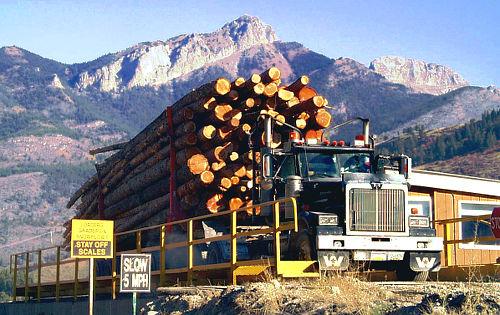 Shifting well with heavy loads is an essential skill for a truck driver. Otherwise you'll do damage to the rear-ends and the transmission.
Shifting well with heavy loads is an essential skill for a truck driver. Otherwise you'll do damage to the rear-ends and the transmission.
But know that if the splitter is blue it's a 15-speed; if it's red, it's 13; and if it's grey, it's 18.
And in this day and age of non-synchronous transmissions, most of them are going to be 18-speeds.
Crash Box - What we call a transmission in a big truck
In a non-synchromesh transmission or sometimes referred to as a "crash box", the driver has to synchronize the transmission in order to make it shift.
And the way that you make it shift is that you have to match the engine speed, the road speed, and the gear.
Those three things have to line up or it will not shift.
Uphill-Downhill
And these variables will change depending on the terrain, so you need to now pay attention to geography - uphill, downhill.
If the truck is slowing down going uphill you don't need to give it as much throttle to shift.
If you're going downhill, the road speed is going to pick up, therefore you need to shift the gears faster or you need to skip the gears in order to keep up with the accelerating road speed.
Transmission Speed
The other thing about these three variables - engine speed, road speed, and the gear--is that the engine speed is a misnomer.
It's actually the gears' speed and the transmission that we're measuring the speed of, but we don't have any way to measure the gears in the transmission and how fast they're spinning, so we use the engine's tachometer.
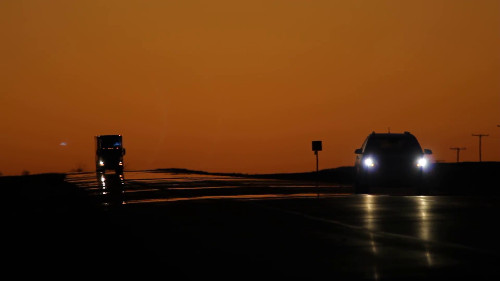 Driving a big truck on interstates and freeways is relatively straight forward. It's the smaller 2-lane highways that can be a lot of work.
Driving a big truck on interstates and freeways is relatively straight forward. It's the smaller 2-lane highways that can be a lot of work.
The engine's tachometer tells you how fast the engine is turning over.
Now in order to spin the gears in the transmission, we have to reconnect the transmission to the motor and you do that with the clutch.
And I'll talk about double-clutching here in a moment.
Because in order to shift a non- synchromesh transmission and to make these three things line up: 1) engine speed; 2) road speed; 3) and the gear.
You have to double clutch, you have to reconnect the transmission to the engine in order to determine how fast the gears in the transmission are spinning.
5th Gear is "The Happy Gear"
One of the gears that we like the best is fifth gear.
If you lose a gear and you're trying to recover and find a gear - eighty-five percent of the time the transmission--a 13- or 18-speed transmission--will go into fifth gear.
So fifth gear - up here with the range selector up, back to the first slot - fifth gear is your go-to gear.
85% percent of the time the truck will go back into fifth gear and you can carry on.
Sometimes it may not be pretty, but you can get it back into fifth gear and go.
As well, fifth is you're up to the lights slow gear.
When you're kind of idling up to the intersection, timing traffic, trying to keep the truck moving, fifth is gear is the one you want--up to the lights slow gear.
Fifth is also the highest gear that the truck will idle in.
You can take your foot right off the accelerator and the truck will just kind of chug, chug, chug, chug, chug.
Fifth gear is the highest gear that that truck will do that in - fifth gear.
Finally, fifth gear is the first gear that the truck actually begins to accelerate - actually begins to pick up speed.
So we need to get through those first low gears as quickly as possible to get up to fifth gear.
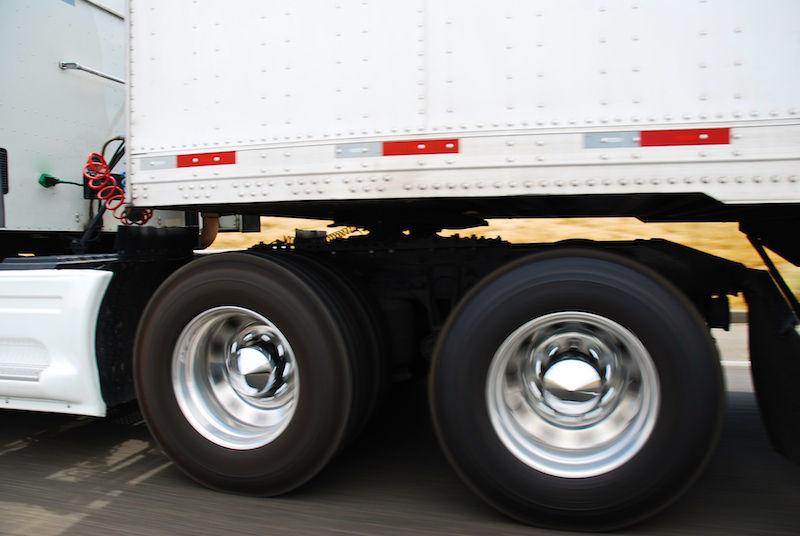 5th gear is the highest gear the truck will idle in and still move forward. You CAN'T start in 5th gear, but if you gear down to 5th, you can take your foot off the throttle and truck will still move forward.
5th gear is the highest gear the truck will idle in and still move forward. You CAN'T start in 5th gear, but if you gear down to 5th, you can take your foot off the throttle and truck will still move forward.
And the faster you get through these low gears, the better fuel economy you're going to get on the truck.
So move through those first four gears fairly quickly up into fifth because we love fifth.
Fifth is that go-to-gear.
It's that happy gear! Its kind of like when you go home at the end of the day and your partner looks at you and gives you a wink and a nod - that's fifth.
So love fifth - fifth is the happy gear.
Low Range; Low Revs—High Range; High Revs
(Progressive Shifting)
One of the other things that we talked about in trucking and in terms of shifting a non-synchromesh transmission is progressive shifting.
And basically progressive shifting was designed and implemented out on the flat on the east coast, where there aren't big mountains and whatnot.
It works well on the flat - doesn't work so well in the mountains.
In the mountains it's more of a variation on a theme.
And my variation on shifting in the mountains is low range, low revs; high range, high revs, because if you start climbing hills, especially if you've got a big load on, you're going to have to bring your rpms up and compensate for drops in road speed because of gravity.
So progressive shifting is essentially every gear you bring your rpms up 50 rpm.
So if you started at 1100, shifting to second and you bring it up to 1150 to shift to third and bring it up to 1,200 to shift to forth and so on and so on and so forth.
However that doesn't work so well here in the mountains on the west coast in Canada and the United States, so essentially what I tell students for the purposes of shifting, especially in low range...can't get the cap off the marker...9-10-11.
1 to 2 is 900, 2 to 3 is 1000.
3 to 4 is 1100- 900, 1000, 1100.
Now if you go to a driving school, different instructors are going to have different interpretations of that.
But that's essentially what I say, "nine, ten, eleven and once you get some practice, you should be able to move through those first three gears fairly quickly.
Pre-select the range selector and back up to five.
Once you get up to fifth gear, then you can start bringing the RPMs up.
Because you're into high range - high range; high revs.
You need to bring the RPMs up 13-1400 RPM, once you get to 5th, 6th, 7th, 8th.
You don't need more than 1500 rpm in a big truck - a big electronic diesel engine.
Unless you're climbing hills, you just don't need more than 1,500.
The peak power band on large electronic diesel engines - and I know that different guys will tell you different things--oh, it's a Cummins, it's a Detroit, it's a Mercedes, whatever!
It doesn't matter - big electronic diesel engines - the power band is somewhere between 1200 and 1500 rpm.
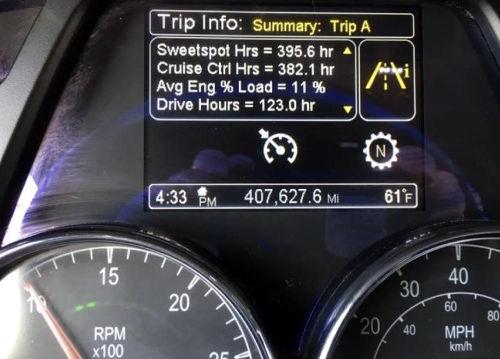 Most engines have a sweet spot between 1,200 and 1,500 rpm. When on cruise control in the top gear, this is where the truck will get the best fuel economy.
Most engines have a sweet spot between 1,200 and 1,500 rpm. When on cruise control in the top gear, this is where the truck will get the best fuel economy.
I drove a Peterbilt last fall within EPIQ engine - its Paccar's own engine.
The sweet spot on that engine was between 1200 and 1400 RPM and there was actually on the tachometer was a spot called the "sweet spot."
And it was right at 1400 RPM, so keep that engine between 1200 & 1400 rpm to get maximum fuel economy.
The Clutch
The other piece on shifting a non synchromesh transmission in a big truck is the clutch.
Although the shifter and the clutch, and everything else looks kind of the same as it does in a car or light truck, it isn't anything like it is in a car or light truck.
And many a student gets in the truck and go: "I got this!"
And then they realize after the first lesson that it's going to be a lot more challenging than they ever imagined.
So the clutch in a big truck:
• the top part is called the free play....
• the next part is called the friction point...
• next part is called the dead space...
• and the last part - right up against the firewall here, that's the firewall - is called the clutch brake.
So the four points of the clutch:
1) free play;
2) friction point;
3) dead space;
4) and the clutch brake– right at the bottom.
Top of the clutch is the freeplay.
Nothing happens there – next point is the friction point: the friction point is where the engine begins to reconnect with the transmission and the vehicle moves forward.
Behind the friction pointis the dead space.
The dead space is where you hold the clutch when you're waiting at a traffic light or waiting to go.
So it's in behind the friction point is the dead space.
Clutch Brake - it's at the bottom
At the bottom - right up against the firewall - is the clutch brake and the reason that we have a clutch brake in a non-synchromesh transmission, is you have to engage the clutch brake to get the vehicle into a starting gear; whether that's first, second, third, or reverse.
Whatever you're starting gear is, you've got to push the clutch all the way to the floor, pause, hold, and put it into your starting gear.
If it won't go into the starting gear, hold the selector against the gear, and ever so gently let the clutch out until it drops into gear.
What happens is that the gears don't quite line up, and it won't go into gear, so you've got to just rotate the gears a little bit.
So hold the stick against the gear, and then ever so gently let the clutch out and then just push it back in.
Double Clutching
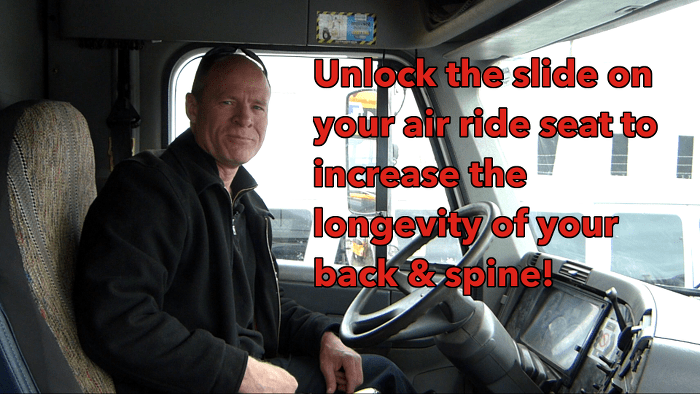 When learning to drive and double clutch, proper adjustment of the air ride seat is critical. If you're too close to the clutch, you'll push it in too far and get a rough shift.
When learning to drive and double clutch, proper adjustment of the air ride seat is critical. If you're too close to the clutch, you'll push it in too far and get a rough shift.
You have to double clutch - so essentially what that means is that you have to clutch once in, pull it into neutral, another clutch and push it back in and then pull it into gear.
So once...one clutch into neutral, one clutch into gear.
And the reason that you do that on the up shifting is because you gotta spin the gears in the transmission in order to keep the gears up to speed to synchronize the transmission.
So you got to double clutch: once into neutral; once in the gear.
And if you're having trouble coordinating that shift with the clutch because you've got to coordinate the clutch as you're pushing it in - ba dump, ba dump, ba dump, ba dump - you gotta coordinate those two things and if you're having trouble with that go home get a chair and a toilet plunger, stick it on the floor and practice with your foot and your hand - ba dump, ba dump - because that coordination is important in order to get it to double-clutch.
Now the other thing that is very weird for students is that you only push the clutch in that far - one inch - just enough to break the plate tension in the clutch.
If you push the clutch in any farther than one inch, what happens is you begin to engage the clutch brake.
And when you engage the clutch brake, it slows down the gears in the transmission and you get a rough sift.
So you only push the clutch in one inch - ba dump, ba dump - and what I tell students for the purposes of shifting a big truck, put the seat back farther.
That way you're less inclined to push the clutch in too far.
And what I'll do is I'll put a card up here for you on how to adjust your air ride seat so that you can adjust the seat so you're not inclined to push the clutch in too far.
Floating the Gear...Yes, You Can Shift Without the Clutch
First, double clutching is more forgiving than floating the gears.
And because it's not as precise, students can pick up shifting faster.
This allows driving instructors to get all the other information into them that they need to pass their on-road CDL test.
Second, if you're slip-seating trucks all the time, it's easier to just double clutch rather than figuring out the nuance of every transmission.
But, if you're driving the same truck all the time, it's easier to just float the gears.
Again, for new drivers, double clutch and you'll get a smoother shift.
Once you start driving and have a bit of experience, then you can dispense with the clutch and "float the gears."
Get Your Foot Off the Throttle
(Clutch Control)
The other piece about the clutch is that in order to take off in a big truck, you don't need to give the vehicle any throttle in first gear when you're taking off.
You just gently let the clutch out--control the clutch--and the vehicle will start off on its own.
The electronic diesel engine will torque up all by itself.
Even in a car or light truck, the electronic fuel injection will torque up the motor and start to bring the RPM up.
So clutch control is really one of the most important things in driving any manual transmission, whether it's a synchromesh or a non-synchromesh transmission.
Downshifting
The last piece for students is being able to downshift and downshifting poses the greatest challenge, not only to students, but drivers generally.
And I think one of the biggest reasons that students and professional drivers don't understand how to downshift is because they don't understand the mechanism behind downshifting and what actually happens in the transmission.
Now there are two or three ways of doing this and different instructors will show you different ways of how to do this.
And they're teaching you how to double clutch and we get into a hybrid form of how to downshift.
The way that I teach students how to do it is to use the clutch...to double clutch.
So you clutch into neutral, clutch into gear.
And the reason you do that is because the transmission tends to be more forgiving.
Other instructors will just teach you to clutch into neutral and then throttle up and let it and sort of match the gear.
Hybrid Shifting - Don't Do It!
They call it tickling - you just kind of tickle the gear until the RPM comes up high enough that the selector will drop into the gear.
It works and you can teach students how to do it, but I find that if you double-clutch down and push the clutch in to put it into gear when you throttle up.
It's just going to make it easier for students because the transmission tends to be more forgiving.
It will depend on the instructor that you're with when you go to the driving school, however.
So what happens in terms of downshifting in a big truck with a non- synchromesh transmission?
So first of all when you shift up, say for example, we shift from 5th to 6th gear and we go up to 1350 RPM.
 On a flat road at a constant speed, cruise control provides best fuel economy.
On a flat road at a constant speed, cruise control provides best fuel economy.
So in fifth gear, we go up to 1350 RPM.
When we drop to six, when we put the transmission in 6th gear - we're not splitting for a moment - the engine rpm drops to 1050.
So what happened was that we went from the maximum of the lower gear to the minimum of the higher gear.
So we went from the maximum of 5th gear into the minimum of six gear.
We went to 1350 on fifth gear and then we shifted to 6 at ten-fifty - maximum to [RRRRRRRRRRRRRNNN, RRRRRRRRRRRRN, RRRRRRRRRRRRRRRRRNNN]
And this is what happens when you shift any standard transmission.
What happens in terms of shifting down is is that in a big truck it's different than what most people do: most people shift down to slow the vehicle down.
In a big truck you gotta slow down to gear down.
You gotta slow down first and essentially what you're doing is you're bringing six gear down to its minimum rpm.
Shift into neutral at the with the clutch, let the clutch out to reconnect the transmission to the engine, throttle back up 300 RPM to 1350, push the clutch in, put it into gear and it will go into the maximum of 5th gear.
When you downshift, you got to do the reverse of what you did going up.
So when you shifted from 5th to 6th for example, you went up to 1350 in fifth gear and then shifted to sixth gear and the RPMs drop down to 1050.
Now when you go back down, you got to do the reverse and you got a brake to slow the vehicle down, which will bring your engine rpm down to 1050.
When your engine rpm goes down to 1050, push the clutch in, put it into neutral, let the clutch back out, throttle up - and that's a little challenging for students when your throttling up when you're slowing down - so that's a bit strange, but you gotta throttle up to spin the gears in the transmission and bring them back up to 1350.
So that you'll match maximum of 5th and then push the clutch in and put it into fifth gear.
So you're doing the reverse of what you did going up to down shift.
And it's a little bit odd.
Now the other thing to keep in mind is you gotta slow down to gear down in a big truck.
So you gotta slow down first and then down shift.
Down to 1000 RPM
And what I tell students when the downshift - the easiest thing to do is every time you downshift, you need to bring it down to at least a thousand rpm.
The lower you bring the tachometer down when you slow down to gear down, the less you have to rev it up and the easier it is to downshift.
So bring it down to a thousand or less.
Now geography, as well is going to impact your downshifting and you're upshifting.
Now for downshifting, if you're going downhill, what's going to happen is your road speed's going to pick up as soon as you put it in neutral, so you have to compensate for that.
And the way that you do that is bring your engine rpm right down to 800 or 700 RPM.
Bring it down a couple hundred more than what you normally would.
That will compensate for the pickup in road speed when you dump the transmission into neutral.
So it's imperative when you're driving a non-synchromesh transmission to pay attention to geography because uphill-downhill is going to impact the speed of the vehicle, which is going to change one of your variables: your road speed, your engine speed, and the gear.
Downshifting for the Purposes of a Road Test
And you're going to have to make allowances for that and change one of the other variables.
For the purposes of the road test, you need to downshift to fourth gear, which is down over here.
So you need to push the range selector down when you get to fifth, and go down to fourth.
You only have to go to fourth.
For the purposes of a road test, you have to demonstrate that you can shift between high range and low range.
Some instructors will get you to shift all the way to the basement - all the way back to first gear.
You don't have to do that, just shift down to fourth gear.
As I said, for the purposes of a road test you have to demonstrate you can shift between high range and low range - high range to low range is just 5th to 4th.
Once you get to fourth, and it starts to lug down, just push the clutch in, come to a stop and leave it in gear until you come to a complete stop for the purposes of a road test.
And then put it back into first gear and you have to hold the clutch in the whole time that you're stopped because you need to be prepared and ready to go when the light changes.
It is Not a Spectator Sport
One last note on learning to drive a big truck and shifting a non-synchromesh transmission.
It's not a spectator sport!
You are not going to learn how to drive a non-synchromesh transmission from this video.
This is going to help and give you some understanding of what's going on down there with the clutch and the shifter and the engine and the transmission and all of that sort of thing, but it is not going to teach you how to drive.
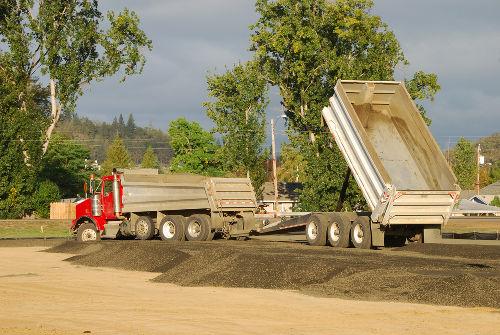 On rough terrain it is best to pick one gear and drive slowly to prevent breaking anything on the truck. It will also give you a better ride.
On rough terrain it is best to pick one gear and drive slowly to prevent breaking anything on the truck. It will also give you a better ride.
Driving a non-synchromesh transmission, driving a big truck is not a spectator sport!
You gotta put time in the seat, you gotta practice and that's the only way that you're going to learn how to do it.
And not only do you got to work the clutch and shift the gears - there's all the rest of that bit of driving that goes along with it as well.
So, seat time, not a spectator sport!
Get as much practice as you can.
You'll be amazed at what three months in the seat will do.
Conclusion
In conclusion, shifting theory.
All transmissions are basic 5-speed patterns.
What allows a 5-speed transmission to become a 10-speed transmission is the range selector.
Down for low, up for high.
The only time you use the range selector is between fourth and fifth.
You're going from 4th to 5th, pull it up, andf shift to fifth.
If you're going from fifth to fourth, push it down before you come out of fifth and it'll shift as you go through neutral.
And you'll hear it after you get a bit of practice with it, you'll be able to hear the transmission click from high range too low range as you're moving through neutral.
Unlike the other gears, it can be fairly quick--ba dump, ba dump.
Fourth to fifth it's ba dump...ba dump.
There's a bit of a pause in there...less than half a second just to allow the transmission time to change gears.
The splitter gives you 13- or 18-speeds.
If you get in a 15-speed it's going to be a blue button.
So it's red, blue, or grey.
Red is 13-speed, blue is 15, grey is 18-speed.
The clutch is very different than most clutches that you're going to find on a car or light truck.
Top of it's the freeplay, the friction point, the dead space and then the clutch brake.
Clutch brake has to be engaged only for starting gears.
After that you only push the clutch in 1-inch because if you push it farther than one inch you start to engage the clutch brake.
When you engage the clutch brake you to slow the gears down in the transmission and you're going to get a rough shift.
So it's tap-tap tap-tap teaspoon...tappy tappy.
And what I tell students is ot push the seat back farther than you normally would, that way you're less inclined to push the clutch in too far because this is one of the major adjustments for students is to stop pushing the clutch in too far.
One of the other things that you have to do as well is you have to double-clutch: once into neutral another clutch into gear - ba dump, ba dump, ba dump, ba dump - and if you're having some trouble with that, go home get a chair, get a toilet plunger, put it down and then practice that coordination - ba dump ba dump, ba dump ba dump.
Once with your foot and once with your hand.
So you have to coordinate those two things.
It's a little bit strange at the beginning when you start double-clutching, especially if you haven't had any experience before.
So for the purposes of shifting a non- synchromesh transmission, it's up to the driver to synchronize the transmission.
You have to match the engine speed, the road speed, and the gear.
Those three things have to line up.
And as well, geography is going to start having an impact on your shifting because downhill-uphill is going to affect the road speed.
Therefore you have to adjust the other two variables to compensate for that.
Now the other thing that I was going to tell you is clutch and throttle work independently of one another.
They cannot work together: ones on, one's off, one's on, one's off - wax on wax off.
And the engine speed is a misnomer - it's not actually the engine speed that were worried about when we're shifting the truck.
It's the transmission speed, but we don't have any way to measure the speed of the transmission gears in a non-synchromesh transmission.
So we use the engine's tachometer.
The engine's tachometer measures how fast the gears in the transmission are spinning, but in order to spin the gears in the transmission, we need to reconnect the motor to the transmission via the clutch.
The clutch pedal has to be out, especially when you're down shifting and throttling up.
Make sure the clutch is all the way out when you're throttling up.
And again the last piece: and this goes for any manual transmission, not just a non-synchromesh - don't ride the clutch.
As soon as you finish shifting the gear, get your foot off that clutch.
Because there's two plates in there and what happens is if you got your foot on the clutch at all, the two plates start to separate.
When the two plates start to separate, they begin to spin against each other and it causes the clutch to wear out.
So don't ride the clutch in any manual transmission vehicle.
You can feather the clutch on a starting gear if you're backing into loading dock or something like that, but most of the time in a big truck, if you're going too fast and find yourself feathering the clutch you're in too high of gear - find a lower gear.
The last piece for non-synchromesh transmission: when you're down shifting, slow down to gear down.
It's different than normal cars and light trucks.
You got to slow the vehicle down - bring the RPM all the way down to a thousand to downshift.
For the purposes of a road test you only gotta shift fifth to fourth.
You have to demonstrate you can shift between high range and low range.
And just to reiterate the last point: learning how to drive a non synchromesh transmission is not a spectator sport! You got to put time in the seat.
The more time you put in the seat, the more proficient you're going to become.
I'm Rick with Smart Drive Test.
If you like what you see here share, subscribe, leave a comment down in the comment section.
All of that helps us out.
If you need more help or you have some more questions about shifting a non-synchromesh transmission or there's just something that you're really grappling with leave us a comment down in the comment section.
We will be more happy to get back to you and give you a hand to get shifting that vehicle.
Question for my smart drivers:
When you started learning how to drive a non-synchromesh transmission, what was your biggest challenge in learning how to shift a non-synchromesh transmission?
For example, was it downshifting, was it double clutching - which part of learning how to shift a non-synchromesh transmission gave you the most grief.
I'm Rick with Smart Drive Test.
Thanks very much for watching.
Remember pick the best answer, not necessarily the right answer.
Have a great day.
Bye now.

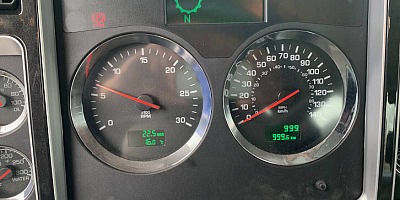


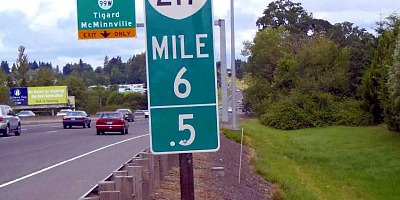


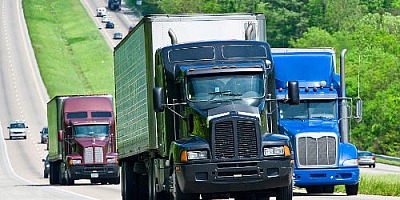



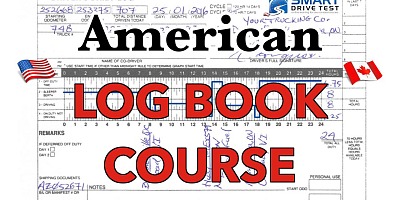
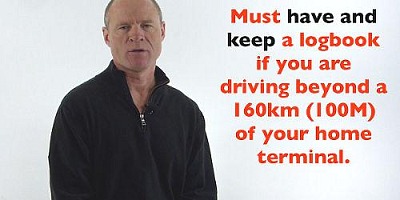





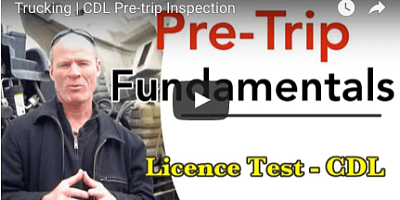
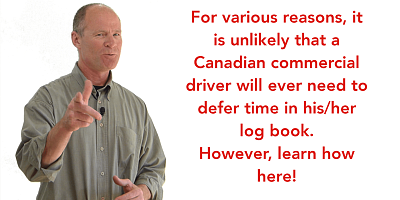

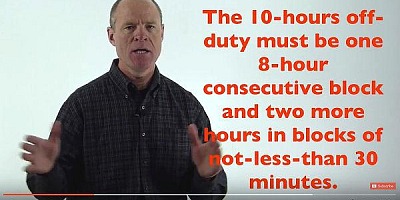
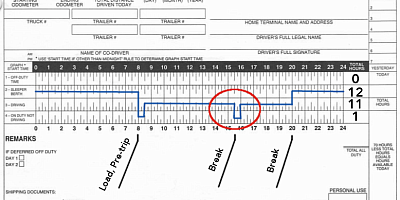
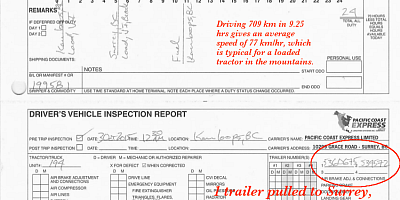
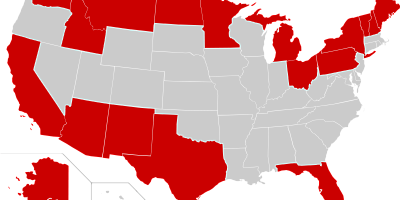
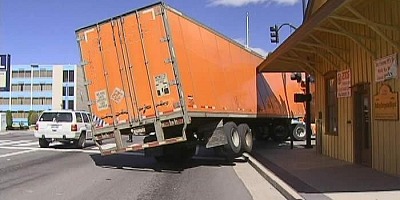
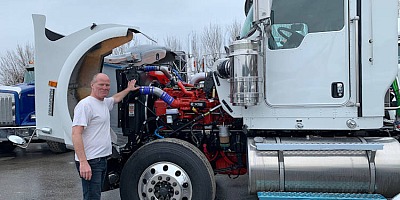
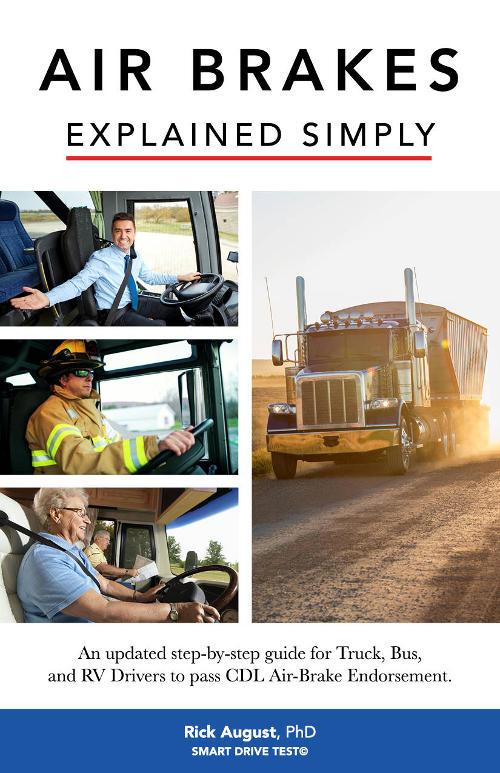 SPECIAL OFFER
SPECIAL OFFER